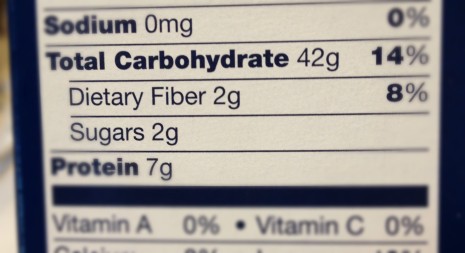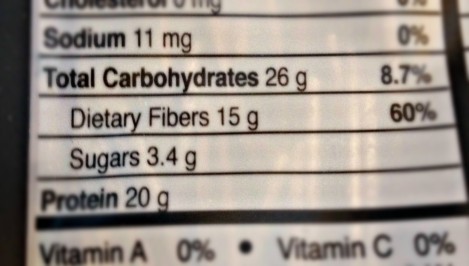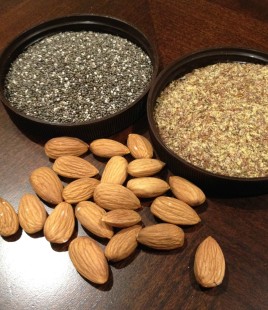“”I have the right to do anything,” you say- but not everything is beneficial. “I have the right to do anything” -but not everything is constructive.” 1 Corinthians 10:23
In the previous part of this double feature (click here to review) we learned how riding on the blood sugar roller coaster can be bad for your heart, blood vessels, hormones, brain and other organs.
Blood sugar peaks 1-2 hours after eating and returns to normal in 3-4 hours. The roller coaster involves extremes which are beyond the normal stable ups and downs of blood sugar.
That doesn’t have to be the case. It is possible to lessen the blood sugar extremes keeping our body in a happier place.
How can we do that?
The Ideal
Change your diet. Prevention is the best medicine! Ideally, we should be choosing to eat healthier. I know, that’s not what you wanted to hear. But stay with me, I’ll get to tips and tricks as well.
In this case, the best and most important way is to eliminate simple carbs, sugar, starchy food and processed foods. We should also avoid foods with a high glycemic load. This will result in blood sugar in the healthy range (Let’s look at that diagram again) and better health.

If you aren’t eating food that will spike your blood sugar then you don’t need to worry about it. It’s never a good idea to constantly eat high carbohydrate junk meals.
Learn what’s good to eat, and what to stay away from. Pay attention to serving size. You know you don’t just eat one serving. I don’t either. Cutting out simple carbs can be difficult for some people.
What can we do in those instances when we know we will be filling up on carbs?
The following is a list of ways to lessen the affect of carbs on your blood sugar. None of them will completely prevent a rise in blood sugar but they can help. The methods combine foods we eat to block the absorption of sugar and starch.
Many of these methods are important parts of a healthy diet and should be worked into your lifestyle. Other tricks can be used in a pinch, but should not be used as a substitute for a healthy diet.
The best result is achieved when combining 2 or 3 methods. Of course, you don’t need to use them for foods that won’t raise your blood sugar.
The Goal
Our goal is to keep blood sugar stable throughout the day. Blood sugar shouldn’t rise more than 40 points 2 or so hours after meal.
If you recall, when you eat simple carbs, glucose is quickly absorbed into your bloodstream. The goal here is to s-l-o-w the absorption of starch so that it is spread out over a larger period of time.
A rush of glucose will require more insulin than a trickle of glucose will. It was described something like this. If you have 10 fighters attack you at once, you would need more defense to fight them off effectively. However, if those same fighters came one at a time, you wouldn’t need as many defenders to do the job. We want sugar entering our bloodstream in a trickle so it doesn’t spike in our blood, stressing out our beta cells.
Slowing Glucose Absorption
We can accomplish this by using what Dr. Thompson calls Sugar Blockers. Combining certain types of foods, increasing activity levels, changing the order you eat food and the time of day you eat all affect how high your sugar will spike.
Remember, these only REDUCE spikes not eliminate them. You should make your diet better, and use these to splurge within limits, not go crazy. If you go nuts your glucose will still shoot up even with using the blockers.
The only reliable way to control your blood sugar is to avoid the problematic foods.
How rapidly the carbs breakdown depends on how simple the carbs are. Refined carbs are like predigested food arriving and are taken in much quicker. They don’t even have a chance to go through the intestines before they are absorbed.
Choose quality carbs and keep the quantity down. Good carbs contribute healthy nutrients. Bad carbs have little nutrition. This includes starchy vegetables.
Glycemic Load
Stick with foods that have a low glycemic load. Start out using this as a tool to help you get the feel for which foods have a high load and which you can eat freely.
There are two forms, the glycemic index and the glycemic load. I recommend using the glycemic load. Here are how the numbers break down:
Glycemic index -best fruits and vegetables have GI of 50 or less
50-69 acceptable
stay away from over 70.
Glycemic load– more reliable and usable than glycemic index. It uses food amounts we actually eat and takes into account the amount of fiber present.
Under 10 is low- lentils, peanuts, nut butters, carrots, apple,etc.
11-20 moderate- oatmeal (1 cup), 1 slice whole grain bread, 3/4 cup brown rice, etc
over 20 high-french fries, breakfast cereal, potato, bagel, white pasta
If you are reading labels, keep carbs under 13.
Total carb
– fiber carbs
should = less than 13


Fiber
We should be getting a minimum of 25-30 grams of fiber per day*. Most American don’t come near that. Add it to your diet even if you don’t have blood sugar spikes.
Fiber is a carbohydrate you can’t digest. It takes time for your body to break down the fiber in foods so your body can absorb the starch and sugar. This allows the glucose to be absorbed slowly into your system. High fiber foods decrease insulin needed after a meal.
Fiber absorbs glucose so it doesn’t digest (also absorbs other nutrients) It may absorb some medications as well, so take medications at a different time.
Insoluble fiber is the kind we can’t digest. (husks, peels of fruits and vegetables, bran, nuts and seeds). We don’t get enough of this. most Americans only get around 5 grams!
10 grams of fiber reduces glucose load by 25% of one serving of starch (add all foods together, eat first) eat fiber foods before starch foods.
It not only reduces blood sugar of the meal you just ate, but also the next meal of the day.
Some good sources of fiber are:
- Flaxseeds(sprinkle on stuff)- 3 rounded T flaxseeds with your meal reduces load by 25-30%. Sprinkle anywhere you would add nuts
- 1 1/2 T Chia seeds 33%- sprinkle on stuff as well.
- Salad -a good choice to have first
- Assorted raw vegetables. Keep veggies partly crispy for most fiber. Mushier foods =less fiber because it is will be broken down. Under cooked foods are harder to digest, therefore, they are less absorbed and raise blood sugar less.
- Nuts
- Beans
- Fiber pills work too: psyllium (not the sweetened kind), oat bran, guar, pectin, powdered seaweed. Take before eating or at beginning of meal.

Don’t use whole grain products as your fiber. They don’t work as well because the fiber is competing with the large amount of starch that is getting absorbed.
Some foods have too much sugar to control 1st meal but gives fiber toward the second meal, like fruit and beans.
*Since most of us are lacking in fiber intake, you may not be used to the fiber, which may cause gassiness. Gradually increase your fiber intake and symptoms will subside in a few days. It is good for your colon health.
Vinegar
Amylase is a digestive enzyme that digests carbohydrates. It is produced in the digestive tract. The more you produce, the faster carbs are broken down and glucose is absorbed.
Vinegar inhibits/deactivates amylase so carbs can’t be digested (can’t digest 👉 can’t absorb). It helps to increase insulin sensitivity.
This works on starch, not sugar (bread/pasta- yes, candy bar/sweetened yogurt- no). Amalyze doesn’t digest sugar.
 Studies show the use of vinegar is comparable to prescription starch blockers.
Studies show the use of vinegar is comparable to prescription starch blockers.
Couple of tablespoons per carbohydrate serving before you eat reduces load 64%
Take 2 T in a glass of water before eating. Put in salad dressing, sprinkle on meal (brings out flavor like salt does).
Apple cider vinegar is a good choice because it is good for so many other issues as well. However, red wine vinegar, balsamic are good choices too.
Taking it after your meal doesn’t work.
Protein
Having protein with carbs causes beta cells to secrete insulin sooner, so you need less.
1 serving protein per carb serving reduces sugar spike by 44%
Eat it before the starchy food.
Be careful though, excessive protein consumption can cause a glucose spike itself.
Fatty foods
Eating fatty foods before your meal slows down the works in the intestines. It slows digestion like a time release effect.
Fat reduces how fast starch is broken down, it slows stomach emptying and helps liver clear glucose out of the blood.
Consuming fat 10-30 minutes before a high starch meal can reduce spike by 38%.
As little as 1 teaspoon(5 gm) of oil (2 handfuls of nuts (60 g), piece of cheese, slice bacon, oil in salad dressing)
Any fat will work, but using a healthy fat gives an extra benefit.
Sources of healthy fats:
- Healthier fat choices are olive oil, avocado oil, nuts, avocados, dark chocolate, omega 3- grass fed beef, certain fish (salmon mackerel, sardines)
- Fish oil before meal (not really enough though) need 5 grams
- 60 grams of nuts (2 handfuls) reduce spike by 37% (including peanuts)
- Nuts also lower bad/raise good cholesterol. They have fiber, medium chain fatty acids,omega 3 and protein.
- Flours from nuts and seeds (almond, coconut, walnut, pumpkin, etc)
Substitute nut flour for part regular flour to reduce spike. ½ and ½ reduces spike by additional 1/3 totaling 66%
Cinnamon
Cinnamon triggers hormones to delay stomach emptying and improve insulin efficiency.
2 teaspoons lowers 13% (for one serving of carbs)
The effect lasts 12 hours!
Exercise (like walking)
EXERCISE IS THE BEST CURE FOR INSULIN RESISTANCE. (every 24-48 hours) Being physically active (like walking 30 minutes or longer) uses the glucose in your blood. It increases insulin and glucose absorption into the muscles which burn it off. Being inactive reduces the amount of glucose burned. This is the best cure. It restores insulin sensitivity and also aides in weight loss.
 After a meal- muscles remove glucose without the use of insulin.
After a meal- muscles remove glucose without the use of insulin.
20-minute walk after your meal reduces spike after it starts. (sensitizes muscles to insulin) Cuts spike 50% The effect lasts 48 hours.
Remember, getting no exercise is terrible for you! Walk everyday, exercise every 48 hours.
Split meals up
If you have a starchy food, eat some of it now and some of it later. Wait 2 hours in between. This sends less to be absorbed at once. (Maybe after 2 hours you won’t even want it anymore.)
Change the order of the foods
Eat the carbohydrates last. Eat your fiber, veggies and fats first, then protein to slow down the release and digestion of starches and sugar. Eat starch and sweets last.
*never eat carbs on empty stomach
* use 3 types of blockers for each serving
IMPORTANT: This is imprecise since there are many variables and will vary from person to person. Therefore, the use of more than one at a time is recommended.
Sources:
Three 15-Minute Bouts of Walking


What a great amount of information! Really need to “digest” all this, so very helpful! Thank you!
LikeLiked by 1 person
What a great article. One of the best I have read. It is simple and informative. I am glad I stumbled into this.
LikeLike
Thank you. I try to be thorough and keep it simple. I’m glad it was helpful.
LikeLike
CBeckett
This is a multi-trillion dollar article. But, olif everyone knew and implemented this consolidated info, you’d put several multi-national, globalist pharma companies out if business. It’s unfortunate MSM is the mouthpiece for them instead of you & this info.
Well done.
LikeLike
Thank you.
LikeLike
Could I ask you what you meant by no more than “40 points” ?
LikeLike
Blood sugar is measured in milligrams per deciliter (mg/dL). So the goal should be to limit the increase to less than 40 mg/dL. So if you start with a glucose level of 100 mg/dL before a meal, your goal should be to keep your 2 hr. post meal glucose to 140 mg/dL or less. Hope that makes sense.
LikeLike